How does carpentry and woodworking differ?

At first glance, carpentry and woodworking might look indistinguishable. Both work with wood, adjacent to construction, and are skilled craftsmen. Upon further inquiry, though, you’ll find that woodworkers and carpenter are not the same at all. In fact, there are several key differences that separate the two trades from each other—how each professional handles wood, what tool each professional uses, and where each professional tends to work. Read this quick guide to better understand the differences between woodworkers and carpenters.

Creating vs. Installing Wood Products
Though carpenters and woodworkers both handle wood products, they do so in different ways. In short, woodworkers create wood products, and carpenters install them. Consider the following examples:
- A woodworker would craft a cabinet and prepare it for installation. A carpenter would install the cabinet in a home.
- A carpenter may cut wood lumber for construction. A woodworker would cut wood for furniture, cabinets, and other wood products.
- Woodworkers create products from organic or synthetic wood products. Carpenters cut wood and timber for resale.
Carpenters and woodworkers complete different tasks, though there is sometimes an overlap in the work that they do. Generally, though, woodworkers create wood products, while carpenters are responsible for installing them.
Tools of Carpenters vs. Tools of Woodworkers
Another important differentiation between carpenters and woodworkers is in the tools that they use. Different types of
construction tools are used in carpentry than in woodworking. Some of the tools most commonly used by carpenters include the following:
- Hammers
- Tape measures
- Nail pullers
- Tin snips
- Utility knives
Woodworkers use many of these same tools, but also use specialized equipment such as the following:
- Power saws
- Hand saws
- Sander
- Planes
- Drills
- Mallets
Though both carpenters and woodworkers rely heavily on
hand tools, you can see that they specific tools they use are different. Woodworkers often use more power tools while carpenters use more manual tools.
Job Location of Carpenters vs. Woodworkers
One of the final differentiations between woodworkers and carpenters is the job sites they are most commonly found at. More often than not, you’ll find a woodworker in a manufacturing plant or an industrial setting, due to the fact that many wood products are produced in mass. This is different than the typical job setting of carpenters, who are more commonly found on residential or commercial construction job sites. Of course, as with many of the other characteristics of these positions, there is some overlap. Some woodworkers will work on construction sites, and some carpenters work in industrials settings.

Frequently Asked Questions
What kind of products does a woodworker make?
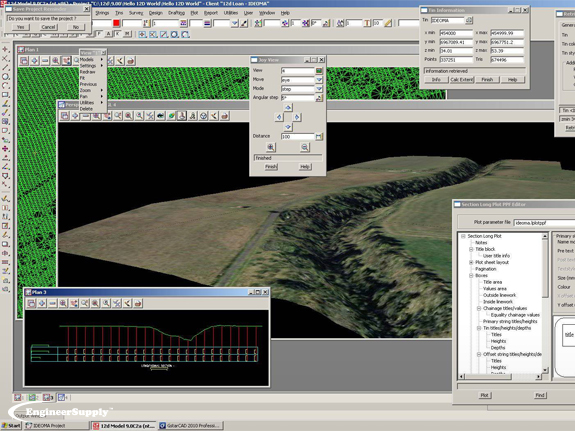
Woodworkers construct a range of different products using materials such as wood and synthetic wood. Some of the items they make include toys, cabinets, furniture, and custom wood products that clients can request.
Where do woodworkers and carpenters buy their tools?
There are many sources that both carpenters and woodworkers can obtain their
construction tools from. Many professionals shop online at retailers like Engineer Supply to find the greatest selection of
hands tools and
measuring tools specifically for wood-based projects.
Is carpentry or woodworking a more difficult job?
Many people wonder which of the two professions is more difficult, but the truth is that both are difficult in their own way. While woodworking might require more artisanal skill, carpentry requires much physical strength — making both professions challenging in different ways.
Does a carpenter or a woodworker make more money?
Carpenters and woodworkers have different job prospects and different salaries, too. According to the Bureau of Labor Statistics, carpenters earn an average of $46,590 annually, while woodworkers earn $38,640.
Should I hire a carpenter or a woodworker?
Whether you should hire a carpenter or a woodworker depends on what kind of project you are working on. If you need a specific wood product designed, then a woodworker is your best bet, but if you need something installed or constructed, a carpenter is the more appropriate professional.
Carpenters and Woodworkers Need the Right Tools
Whether you’re a carpenter or a woodworker, you need the right
measuring tools and
hand tools to get the job done With the best selection of
marking supplies and other tools needed for wood-based projects, Engineer Supply is the retailer of choice for carpenters and woodworkers. Call 800-591-8907 for more information or to place an order.
Best Construction Level
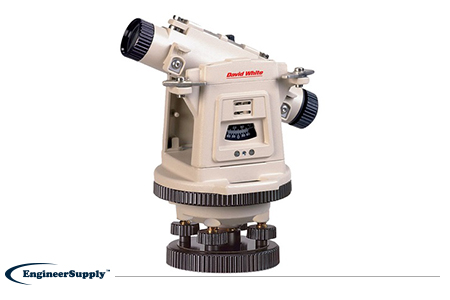
This 26x transit level has an accuracy of 3/16 of an inch at distances of up to 150 feet, but it has a total range of 400 feet. The optics have a horizontal circle with a lock and tangent as well as a vertical arc with a lock and tangent. It also has a 5/8" x 11" thread size and a 1:100 stadia with a glass reticle. When you purchase this construction level, you will also get the following:
- Optical plummet
- Rain hood
- Objective lens cap
- Hard carrying case
If you’re ready to purchase this level, be sure to pick yours up at Engineer Supply.
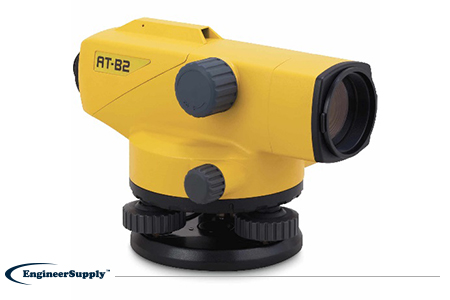
This automatic level will allow surveyors and construction professionals to get accurate level, angle, height and distance measurements. The optics have a 32x magnification, a 1/32-inch accuracy, and a built-in compensator that will stabilize the line of sight (even in the presence of fine vibrations that can be caused by heavy equipment on the job site).
The telescope has a focus range of 7.9 inches and can be used in confined spaces. It also has an internal magnetic dampened compensator, which will allow you to level the line of sight within a range of 15 arc minutes at an accuracy of 0.3 arc seconds. You can even get it with the following accessories:
- Diagonal eyepiece.
- Optical micrometer.
- Light pack (which can be helpful low-light conditions).
- 40x eyepiece (which will improve accuracy and magnification).
Be sure to pick yours up at Engineer Supply today!
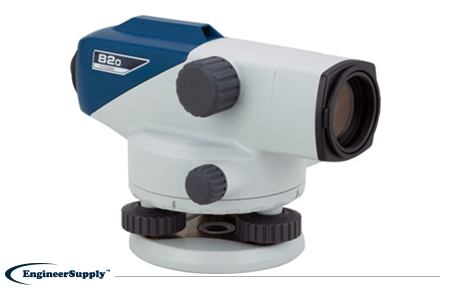
This construction level has been proven to provide both precision and durability. It also features enhanced reliability in all types of environmental conditions. Its tough and compact body has an IPx6 Rating. So, it will be resistant to damage caused by water, humidity, and dust. It also has a number of useful features, which can include but may not be limited to:
- Precise and reliable automatic compensator — It has four high-tensile suspension wires and a magnetic dampening system, which will ensure accuracy and stability (even when it’s exposed to temperature changes, vibrations, or shock).
- Superior telescope — It can provide an exceptionally bright and sharp view that will minimize eye strain. It also has an ultra-short focus of 7.9 inches (20 cm) from the end of the telescope, which makes it easier to use in confined spaces.
- Quick collimation — The two knobs of endless horizontal motion drives can be operated with either hand, which allows for faster and easier aiming.
- Horizontal angle measurement — Horizontal angles can be read in one-degree or one-gradian units, and the freely rotatable circle will allow you to perform any angle reading from zero.
The stadia lines on the reticle will allow you to perform any distance measurement, and it’s easy to adjust with one screw. The circular level vials are adjusted with two screws, but both of them are quick and easy with the provided tools.
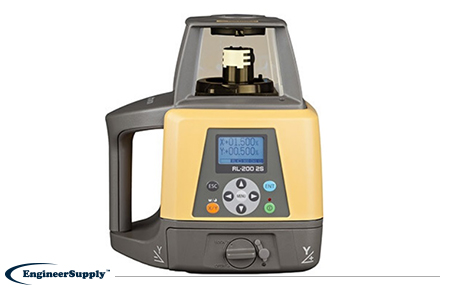
This self-leveling, dual-slope rotary construction laser level is great for exterior applications and it includes the following:
- Rechargeable battery kit.
- LS-100D laser detector with the Holder 6 rod clamp.
- RC-400 remote control.
- Hard carrying case.
The red laser beam has an operating range of 3,600 feet in diameter with a laser detector, and it has an accuracy of 3/64 of an inch at distances of up to 100 feet.
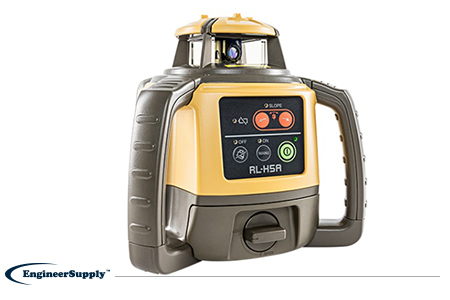
This construction laser level has an operation range of up to 800 meters, and it comes with a smart long-range receiver. The laser has a rotation speed of 600 rpm with a self-leveling range of five degrees. The battery can last up to 100 hours, and the body has an IP66 Rating (which allows it to withstand dust, a sudden shower, or even heavy rainfall). When you purchase this laser level for construction, it will come with a 5-year manufacturer’s warranty as well as the following accessories:
- Topcon LS-80L Laser Detector.
- Sensor holder.
- Carry case.
Be sure to pick yours up at
Engineer Supply today!
Please Wait...
